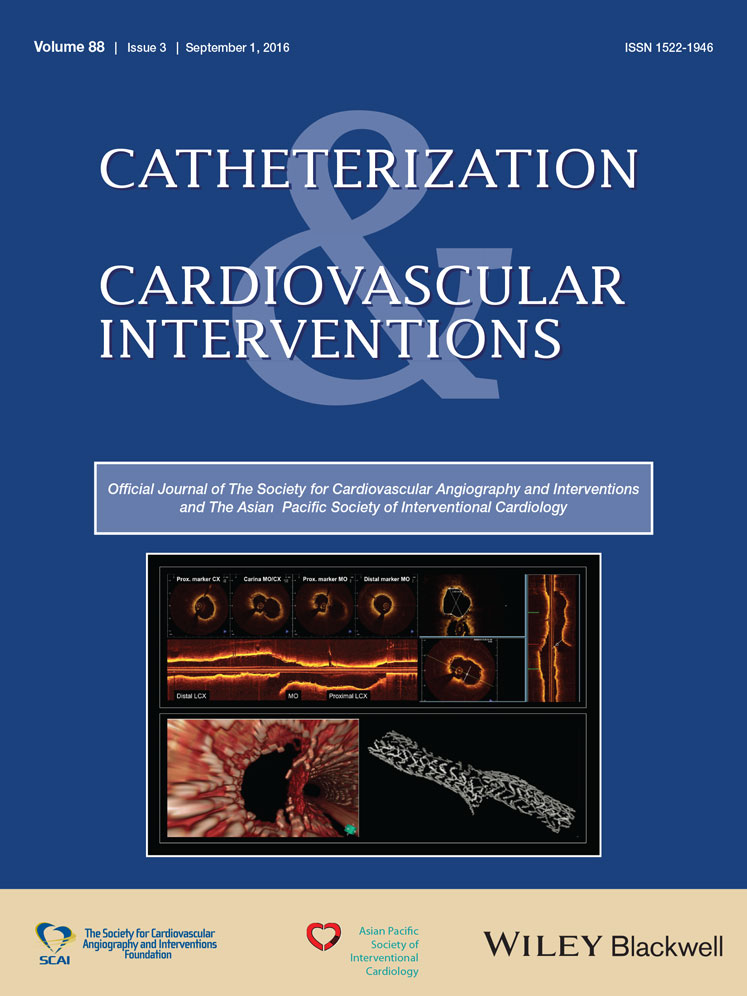Two-year outcomes after treatment of severely calcified coronary lesions with the orbital atherectomy system and the impact of stent types: Insight from the ORBIT II trial
Conflict of interest: Nothing to report.
Abstract
Objectives
We report 2-year outcomes of the Evaluate the Safety and Efficacy of OAS in Treating Severely Calcified Coronary Lesions (ORBIT II) trial, with emphasis on the impact of stent type. Background: The ORBIT II trial demonstrated the safety and efficacy of the Diamondback 360° Coronary Orbital Atherectomy System (OAS; Cardiovascular Systems, Inc., St. Paul, MN) in the treatment of de novo, severely calcified coronary lesions. Methods: ORBIT II was a single-arm trial that enrolled 443 subjects with severely calcified lesions at 49 US sites. All patients were intended to be treated with OAS before stent implantation. The primary safety endpoint was 30-day major adverse cardiac events (MACE: Cardiac death, myocardial infarction, or target vessel revascularization). For the purpose of this study, we divided patients into three groups according to the type of stent implanted (i.e., bare metal stent [BMS], first-generation drug-eluting stent [DES], or second-generation DES). The 2-year MACE rate and its components were compared between groups. Results: In the ORBIT II study cohort, 2-year rates of MACE, cardiac death, and target vessel revascularization were 19.4%, 4.3%, and 8.1%, respectively. Two year data were available in 419 of 443 patients (94.6%) with median follow up time of 25.1 months. Stent-type data were available in 435 of the 443 patients (98.2%). Six patients received stents of more than one type and were excluded from the stent type comparisons. Among the 429 patients included in the stent comparison analyses, 43 patients (10.0%) received BMS, 74 (17.2%) received first-generation DES, and 312 (72.7%) received second-generation DES. The 1 and 2-year target lesion revascularization rates were lower among patients receiving first-generation (1.4% and 6.3%) and second-generation (3.9% and 5.0%) DES compared to patients receiving BMS (15.3% and 15.3%), respectively (1 year: P = 0.007; 2 year: P = 0.047). Higher diameter stenosis and the use of BMS were independently associated with the occurrence of MACE and TVR at 2 years. Conclusions: OAS remained safe and effective for patients with de novo, severely calcified lesions at 2 years in the ORBIT II study. Adverse ischemic events were significantly higher with BMS compared with DES. © 2016 Wiley Periodicals, Inc.




